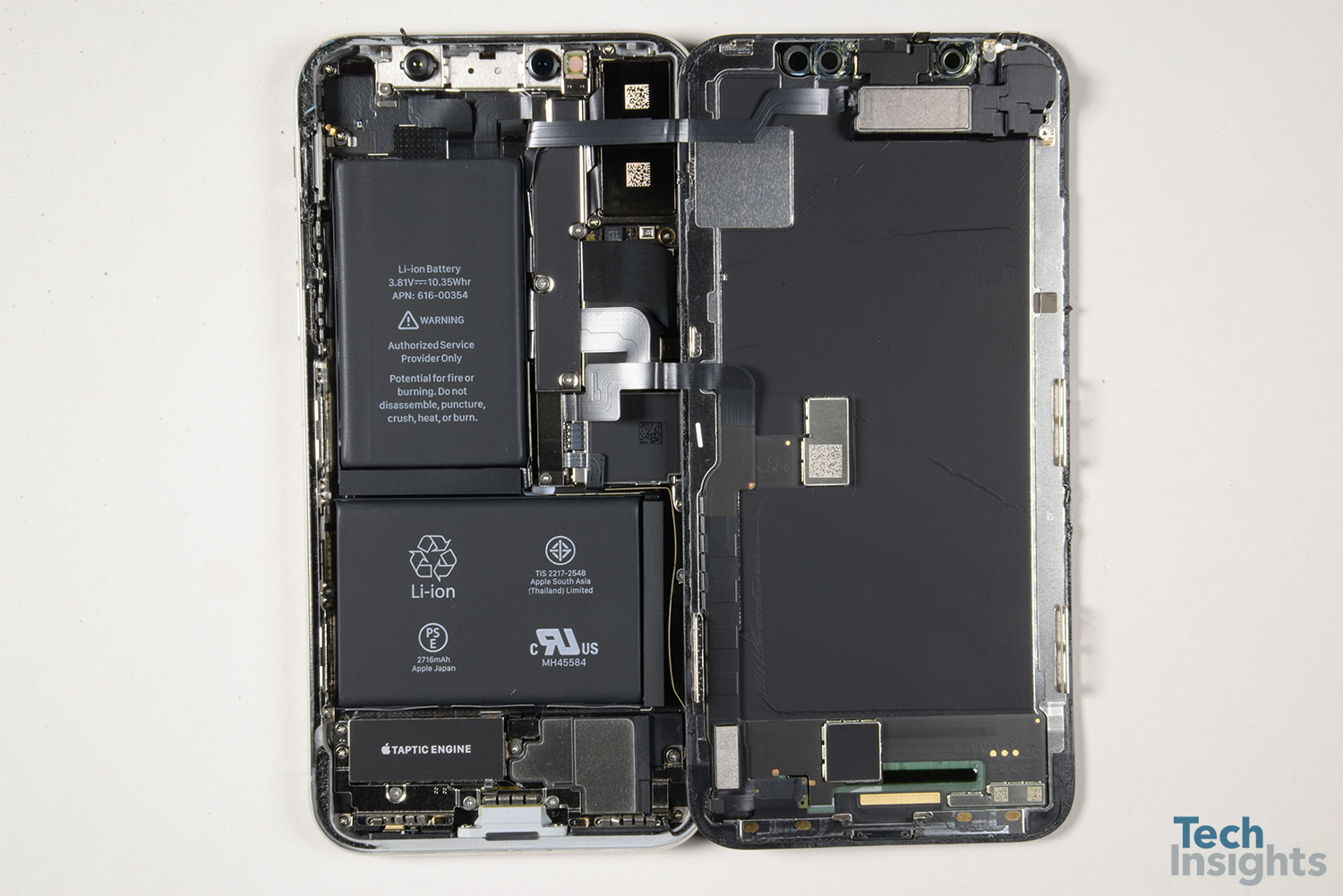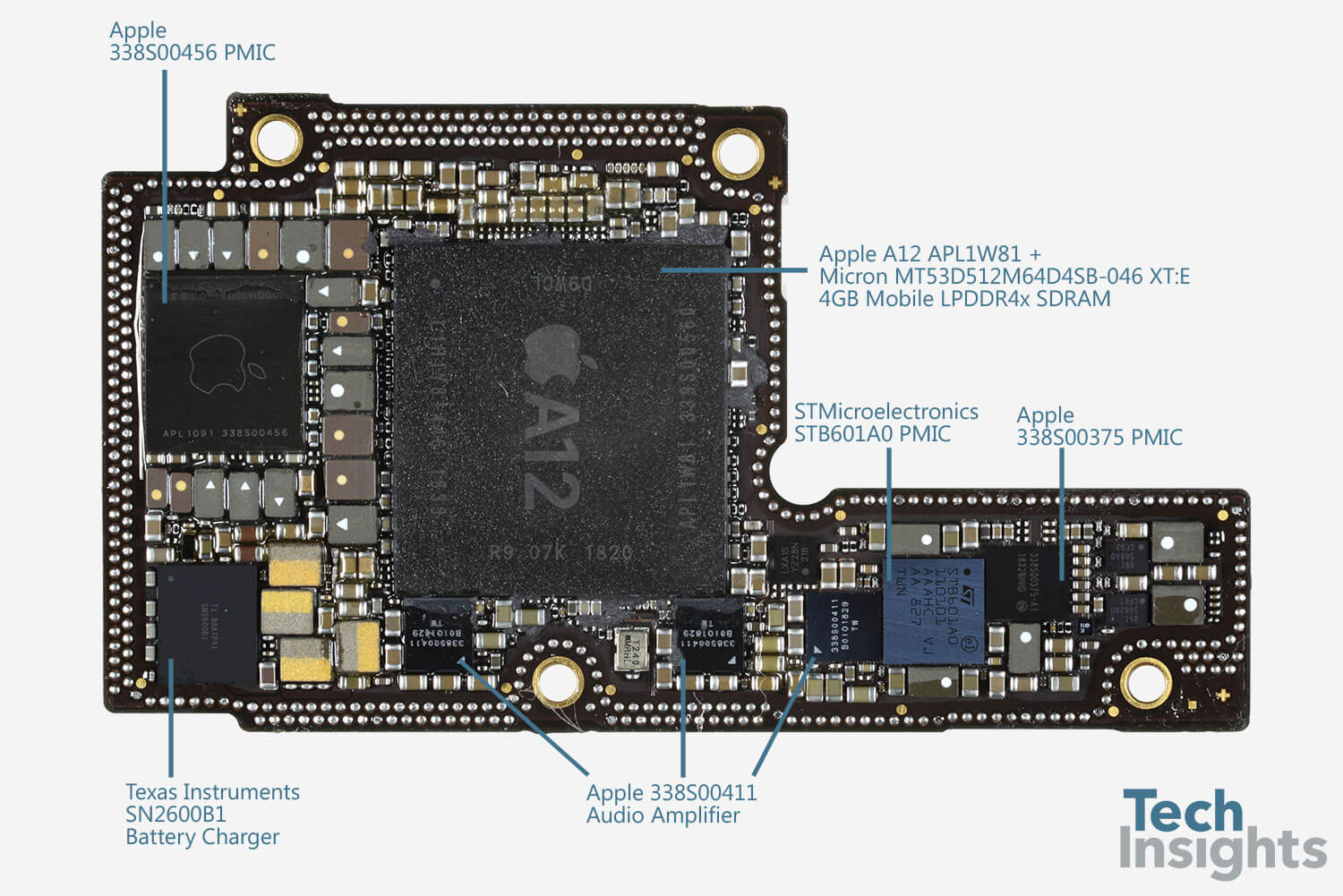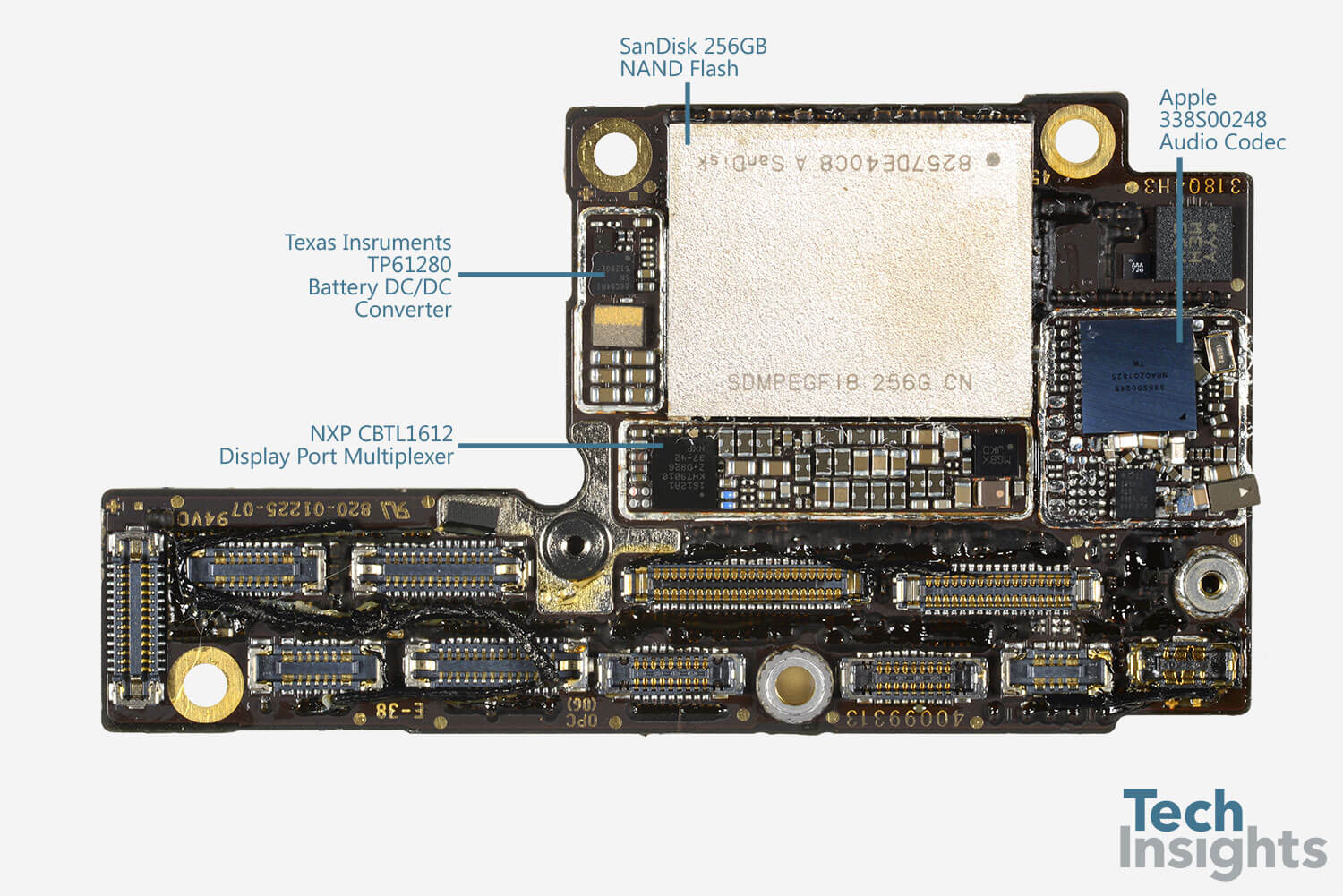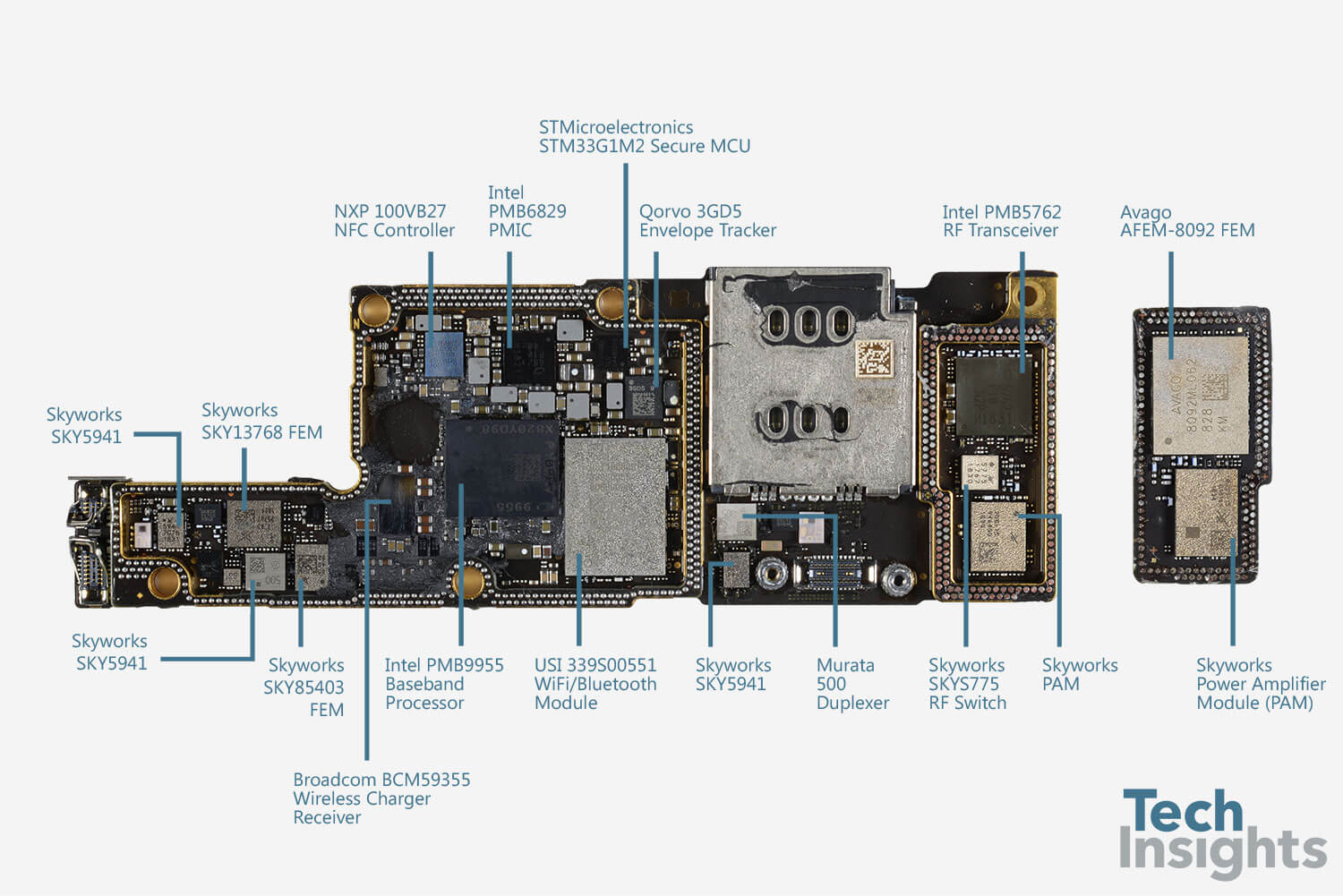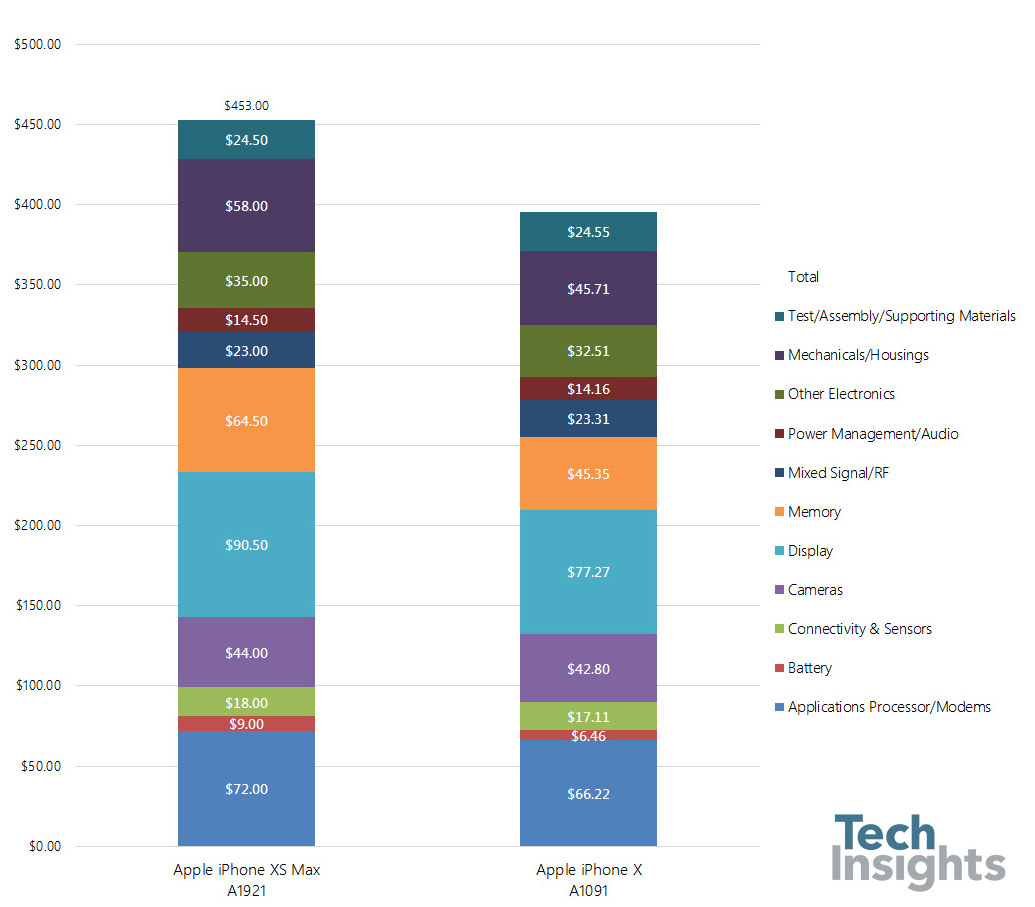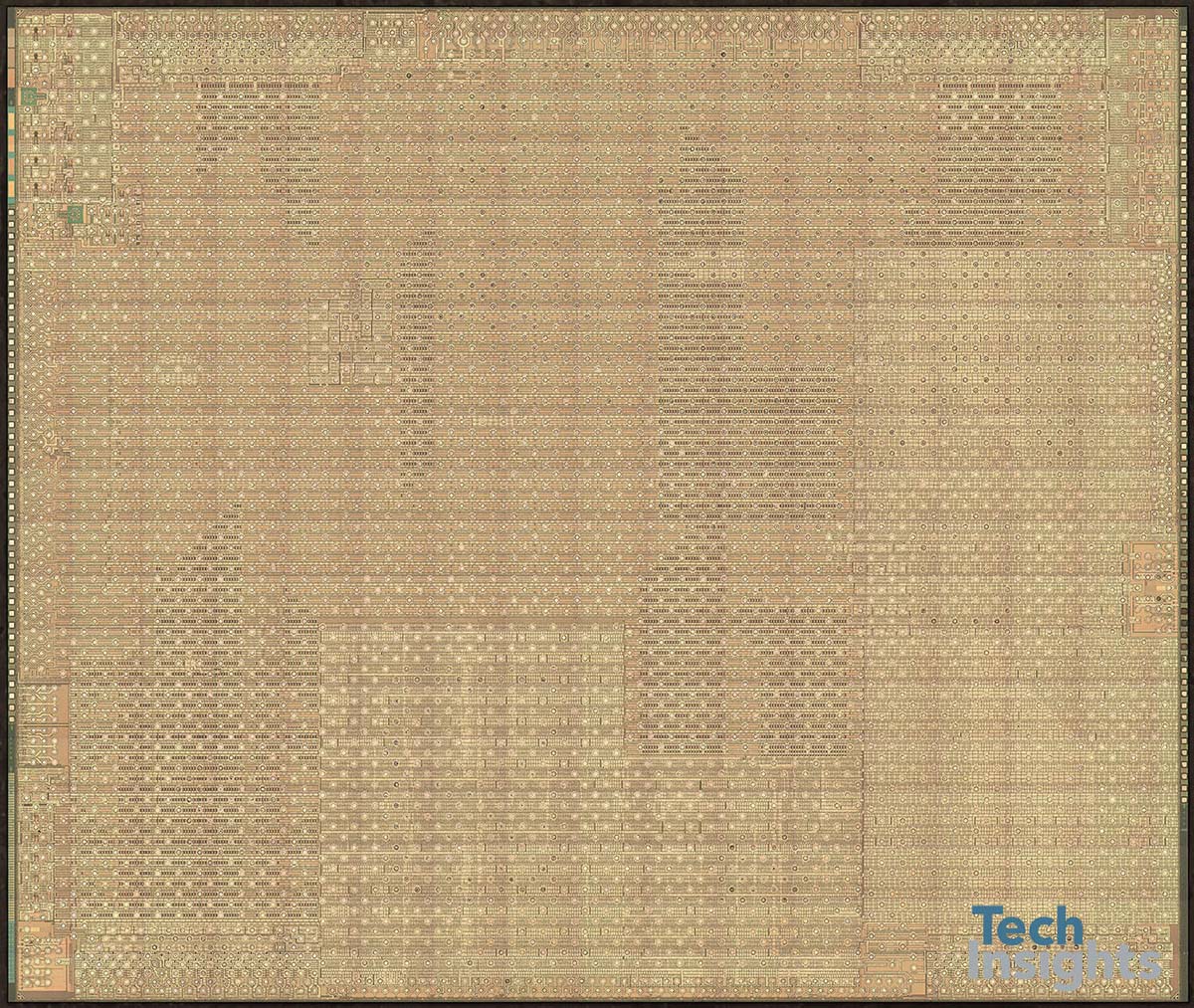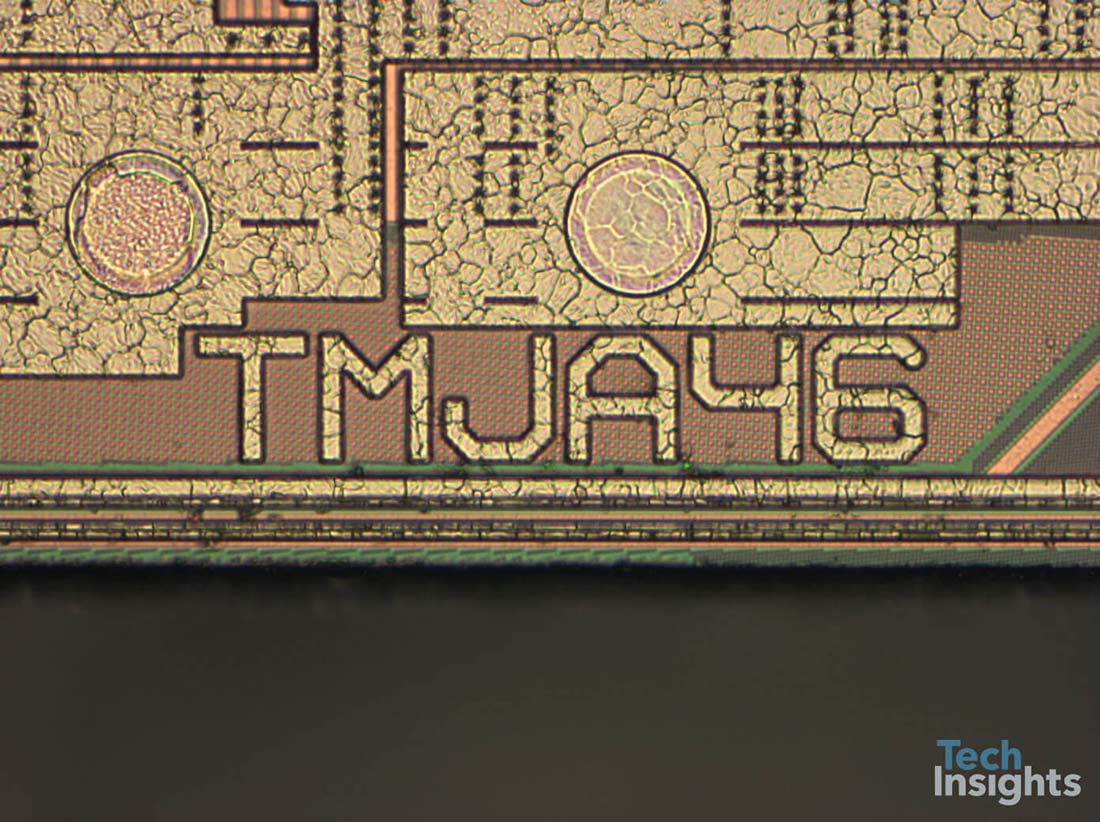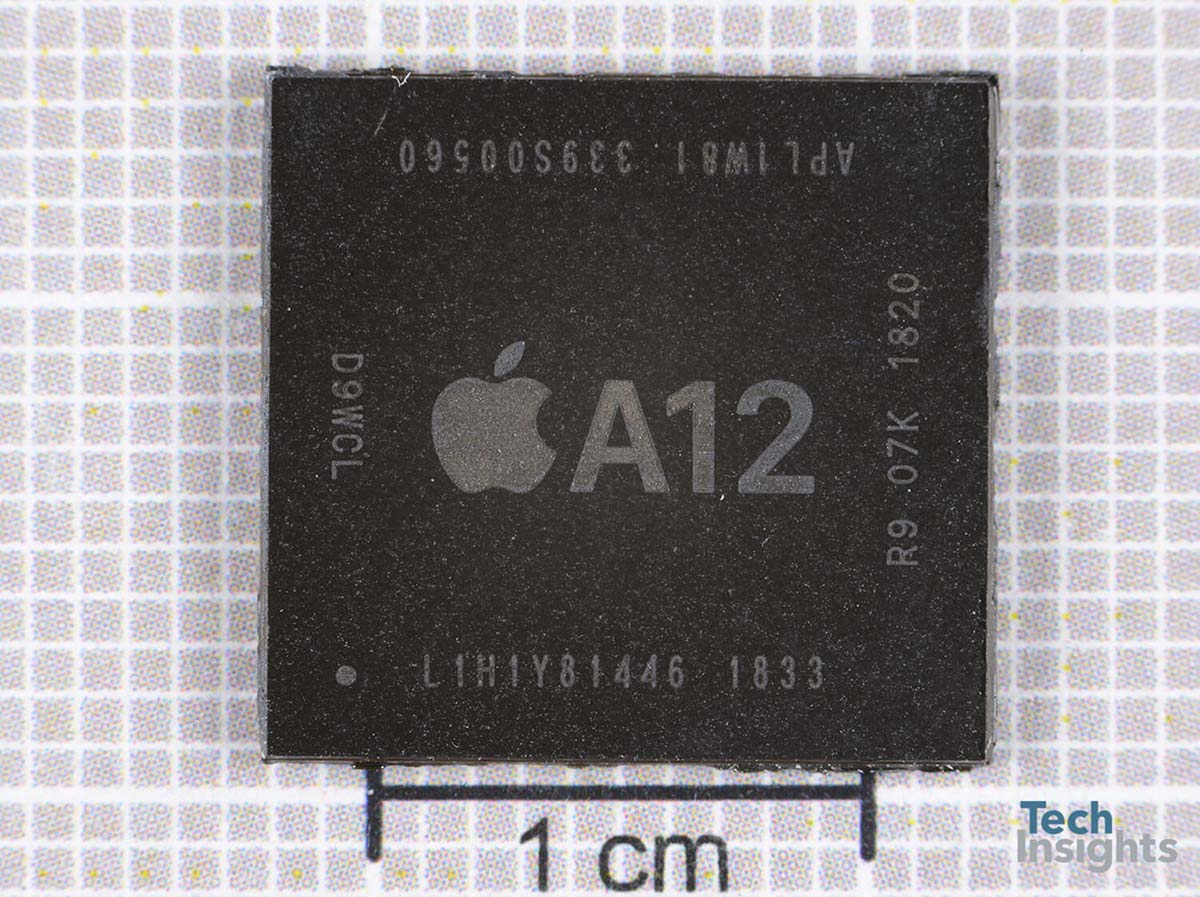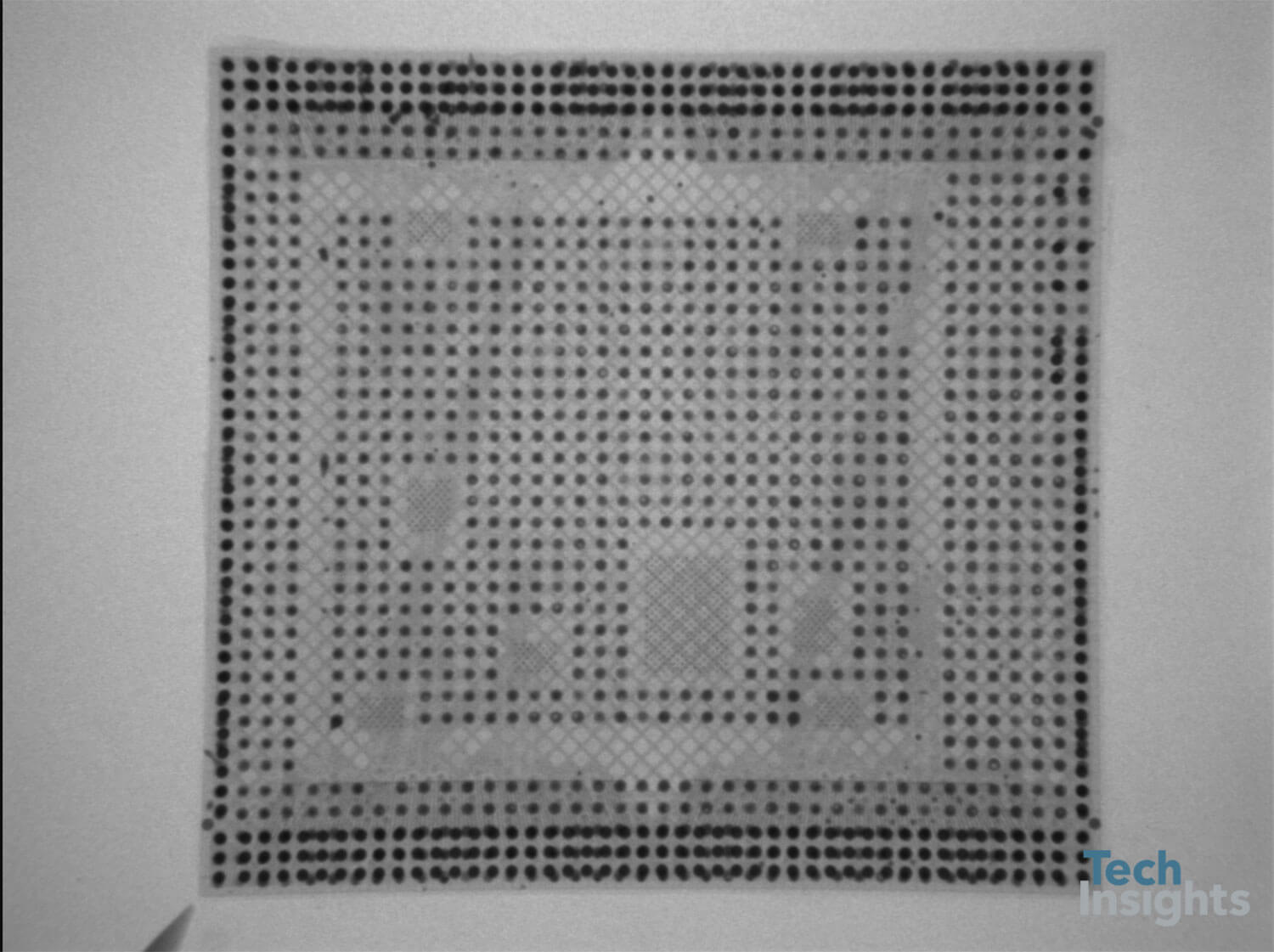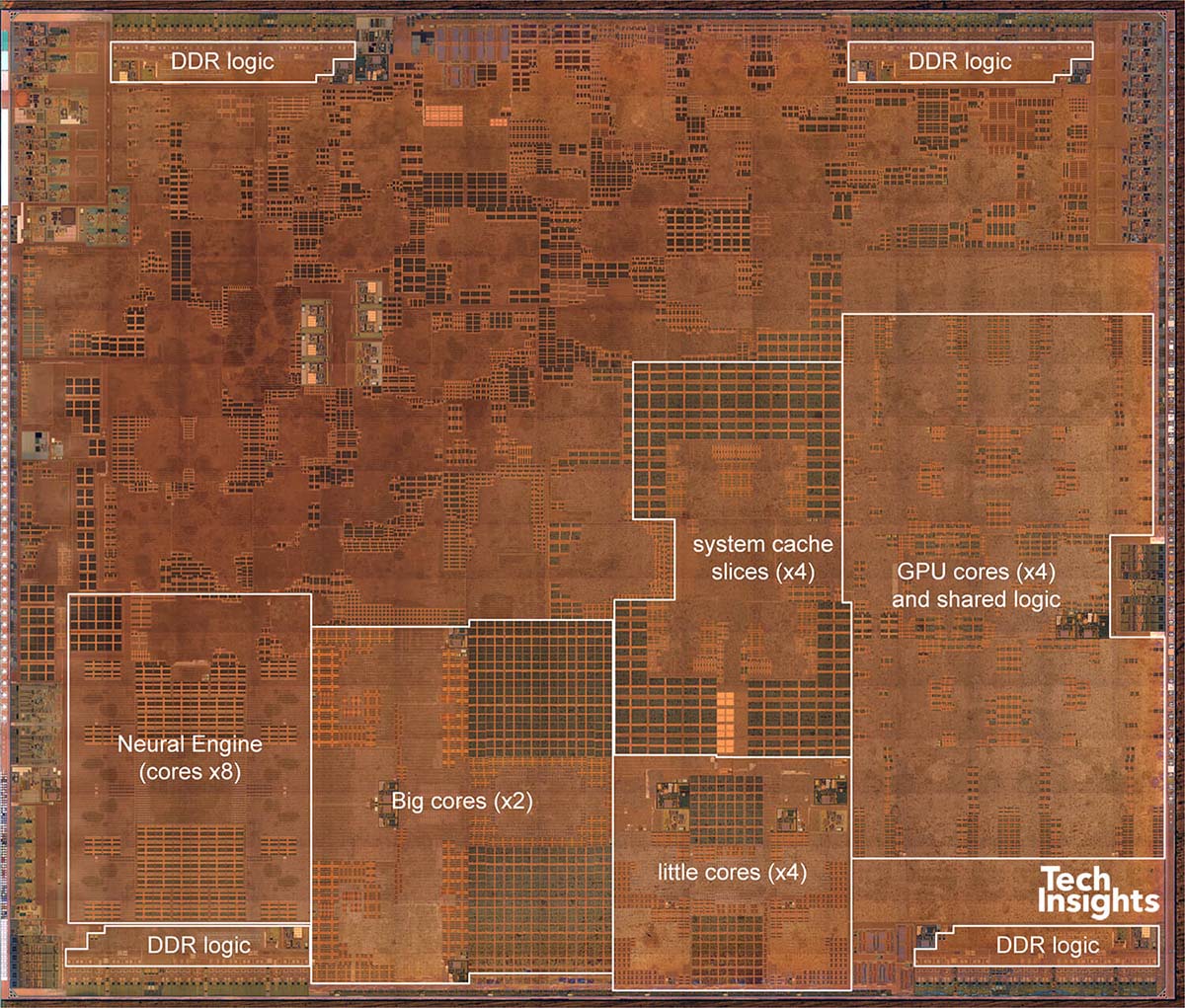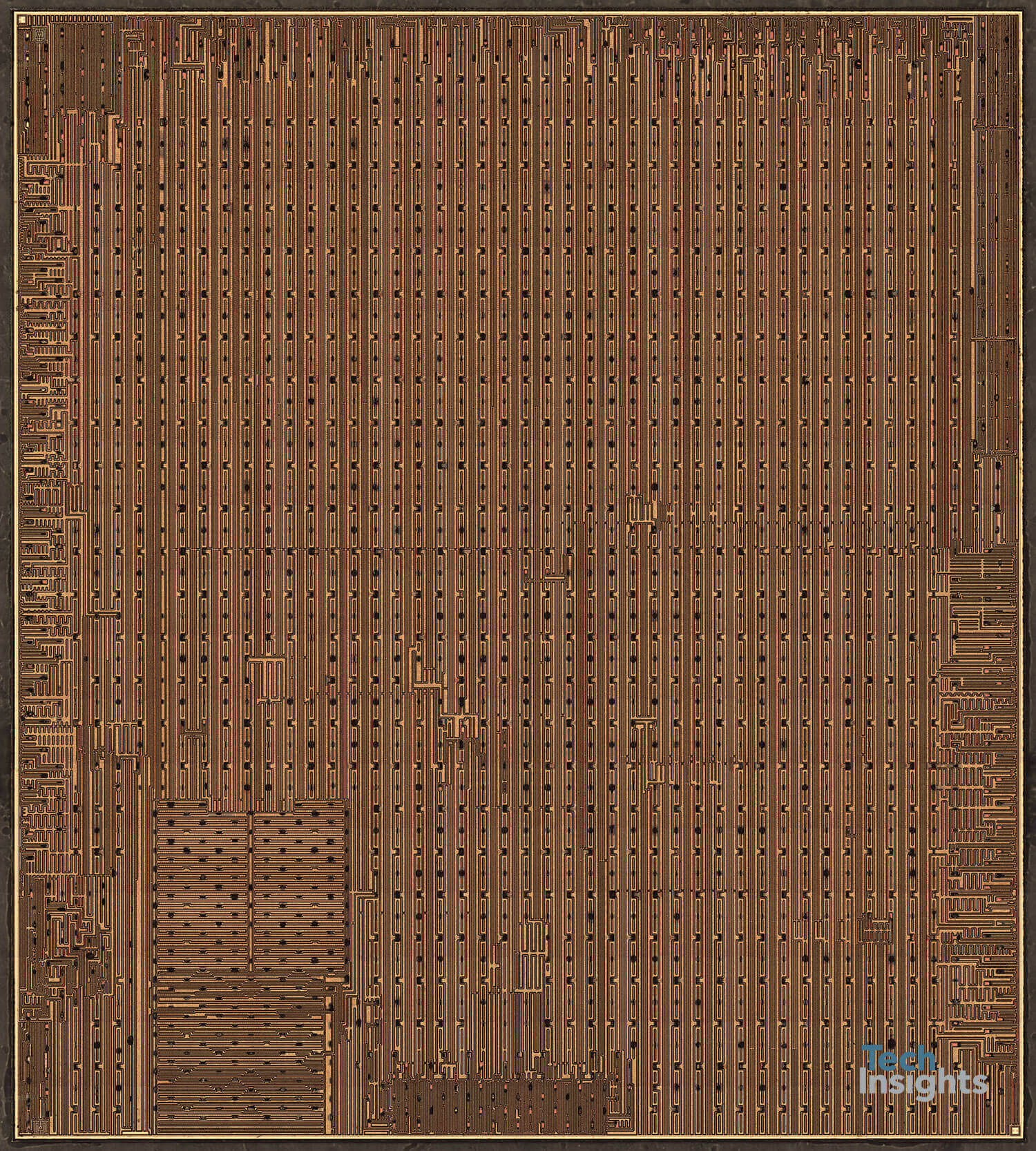Разборка iPhone XS и iPhone XS Max
Данное руководство является обзором внутренностей iPhone XS и iPhone XS Max, с целью разобраться как это работает и из чего состоит.
Как разобрать и заменить дисплей, батарею или материнскую плату смотрите в инструкциях по ремонту iPhone XS и iPhone XS Max
Новый iPhone XS выглядит очень похожим на предыдущий iPhone X, но все же есть отличия. Компания Apple вернулись к циклу обновления модели с доработками.
Судя по задней крышке, которая так же выполнена из Gorilla Glass, они ничем не отличаются от предыдущей модели, и можно подумать, что технически ничего не изменилось с момента последнего айфона, помимо золотого цвета и нового варианта размера XL. Но если пропустить айфон через рентгеновское излучение, можно заметить, что изменения все же есть.
Приступим к разборке iPhone XS. Откручиваем привычные 2 винтика возле разъема для зарядки.
Все так же необходимо нагреть лицевую сторону телефона, к примеру, с помощью обычного фена что бы смягчить клей.
Далее с помощью присоски для демонтажа дисплеев тянем вверх и поддеваем пластиковым инструментом дисплей iphone xs.
К счастью процесс разборки остался довольно простым, как и в предыдущих моделях, хотя мы опасались, что Apple может наложить больше клея, чтобы достичь нового рейтинга IP68.
Сняв дисплей, отключив все шлейфы и убрав его в сторону, мы начинаем замечать несколько различий между XS и XS Max.
Вибромотор Taptic Engine в XS Max был изменен, видимо в силу того, что сам телефон большего размера и вибромотор должен быть больше.
Айфон XS Max также получает расширенную материнскую плату, причем один из разъемов дисплея перемещается в нижнюю часть.
Аккумулятор у айфона XS новый и выглядит иначе, в то время как батарея XS Max возвращается к знакомому дизайну.
Заметны небольшие изменения в слоте для SIM-карты. Они немного отличаются друг от друга, при рассмотрении заметны отличия у прокладки. Тем не менее, если бы мы жили в Китае, у слота SIM-карты была бы еще одна сторона для симки.
Схема платы iPhone XS
Теперь давайте наконец посмотрим на основную плату айфона XS!
Посмотрим, что находится поверх верхнего слоя:
- Toshiba TSB3243V85691CHNA1 64 GB flash storage
- Apple 338S00248 audio codec (возможно от Cirrus Logic)
- Микросхема питания Cypress CPD2 USB
- Мультиплексор дисплея NXP CBTL1612
- Texas Instruments 61280 battery DC converter
Смотрим нижнюю сторону верхней панели платы:
- Apple APL1W81 A12 Bionic SoC многослойный Micron MT53D512M64D4SB-046 4 GB LPDDR4X SDRAM
- STMicroelectronics STB601A0 управление питанием IC (возможно, для Face ID)
- 3x Apple 338S00411 звуковые усилители , два для стерео и один для тактильной чувствительности
- Apple 338S00383-A0 управление питанием IC (возможно, для Dialog Systems)
- Apple 338S00456 управление питанием IC
- Apple 338S00375 управление питанием системы IC (возможно, для Dialog Systems)
- TI SN2600B1 зарядное батареи
Копая глубже, смотрим RF плату:
- Apple/USI 339S00551 (XS) и 338S00540 (XS Max) WiFi / Bluetooth SoC
- Intel PMB 9955 (вероятно, XMM 7560) процессор / модемы основной полосы частот
- STMicroelectronics ST33G1M2 32-битный MCU с ARM SecurCore SC300 (Это такая же встроенная SIM-карта (eSIM), которая используется в Apple Watch Series 3 и Google Pixel 2 XL)
- Контроллер NFC NXP 100VB27
- Беспроводной модуль зарядки Broadcom 59355A210646
RF-плата часть вторая:
- Avago 8092M high/mid PAD
- Murata 500 4×4 MIMO duplexer
- Модуль усиления мощности Skyworks 206-15 и 170-21
- Приемопередатчик Intel 5762 RF
- Сетевой коммутатор Skyworks S775
- Skyworks 5941 GPS малошумящие усилители
- Интеллектуальная интегральная схема Intel 6829
Пришло время поговорить о камерах! Новые айфоны поставляются с обновленными камерами, и Apple на презентации много говорили об новых датчиках.
Размер широкоугольного датчика увеличен на 32%.
Размер пикселя также был искажен, обеспечивая лучшую производительность при низком освещении и способствуя новой функции «Smart HDR».
Батарея iPhone XS оснащена аккумулятором 10.13 Вт (2,659 мА / ч при 3,81 В), весом 39,5 г, немного пониженным по сравнению с прошлогодним iphone X. Но это снижение емкости связано с дико-новой конфигурацией батареи. Вместо того, чтобы использовать две ячейки для заполнения этой L-образной выемки, Apple построила совершенно новую одноячеечную батарею.
Аккумулятор iPhone XS Max неожиданно выходит на максимальную емкость, с 12.08 Втч (3,179 мАч при 3,80 В) и весом 46,6 г. Однако здесь нет ни одной ячейки.
Вибромотор Taptic Engine и громкоговоритель выпускаются в сборе, но легко разделяются для модульной замены. XS Max оснащен немного большим вибромотором Taptic Engine, но в целом соответствуют тем же самым проектам.
Динамики почти одинаковые, но есть различия, у айфона XS Max немного больше громкоговоритель.
Несмотря на множество улучшений в этом телефоне, у него осталась одна и та же конструкция корпуса как у iPhone 8 / iPhone X, что означает, что один крошечный треск на стекле камеры требует полной замены шасси корпуса.
Face ID по прежнему остался отдельным заменяемым модулем.
Огромное спасибо нашим любезным друзьям из iFixit за их потрясающую работу и предоставленную информацию!
Теперь можно подвести итоги ремонтопригодности iPhone XS и iPhone XS Max:
— не сложная и доступная замена дисплейного модуля или батареи.
— сломанный дисплей можно заменить без удаления биометрического аппаратного обеспечения Face ID.
— для разборки необходимы дополнительные отвертки Pentalobe 0,8мм и Tri-Wing Y0 в дополнение к стандартным Phillips PH00.
— гидроизоляционные прокладки усложняют некоторые ремонтные работы, но от этого никуда не деться.
— заднее стекло корпуса по-прежнему остается уязвимой частью телефона, и, если заднее стекло разбивается, при ремонте необходимо будет произвести полную разборку устройства до последнего винтика.
Похожие статьи
Разборка iPhone XR и технический обзор
Разбираем iPhone XR, смотрим что внутри и из чего он состоит. Технический обзор нового телефона от Apple.
Инструкции по ремонту iPhone XS Max
Пошаговые инструкции по которым можно произвести ремонт iPhone XS Max своими руками.
Источник
Apple iPhone Xs Max Teardown
Posted: September 17, 2018 — Updated: October 3, 2018
Contributing Author: Daniel Yang & Stacy Wegner
It has become a tradition for us at TechInsights… as the beautiful Fall season rolls around, we all prepare for our Apple Day — the annual teardown of the new Apple iPhone.
You may still remember that Apple used the tagline “Say hello to the future” to introduce the Face ID-powered iPhone X in September 2017 (and TechInsights blogged about the Apple iPhone X teardown here, and conducted a costing comparison of several different 2017 flagship phones here). This year, Apple is using the tagline “Welcome to the big screens” to unveil the iPhone Xs Max and iPhone Xs, which can be interpreted to mean that larger screens are a key feature of this year’s iPhones.
It can almost be considered an Apple tradition: the year immediately following the release of a major new flagship product (last year’s iPhone X), fewer revolutionary features are introduced.
Note that we said “fewer,” not “none” — we still expect to see some exciting new things in the iPhone Xs and Xs Max, including the TSMC 7 nm FinFET fabbed Apple A12 Bionic chip with its new 8-core Neural Engine, a second generation Apple-designed GPU, an Intel CDMA-supported baseband processor, new CMOS Image Sensors, and new Face ID components.
We have the iPhone Xs Max, model A1921, with 256GB capacity in our labs. As we do every year, we will update this blog post with our findings as soon as we can. Check back often over the next several days for updates.
Here is what we saw inside the phone when we first opened it.
If we compare the iPhone Xs Max to the previous iPhone X, they are very similar.
Inside the iPhone Xs Max
Typically when Apple has a design they feel does the job well, they use similar design strategies in their follow up products, and that is what we see here. Just like last year’s iPhone X, the iPhone Xs Max uses 2 pieces Substrate-like PCB (SLB).
There is one thing we do spy on this assembly, however. It looks as if there is a 3rd PCB in the same place where the power amplifiers were designed on the PCB in last year’s models. If this PCB is a type of RF-module with all the necessary RF front-end components and circuits, this could be a way for Apple to get around designing unique main boards to support different markets with different cellular coverage and bands.
iPhone Xs Max — Board Shots
iPhone Xs Max — Board Shot
Costing
Here is a high-level view into the costs of the various components of the iPhone Xs Max:
| Apple iPhone XS Max A1921 | Apple iPhone X A1091 | |
|---|---|---|
| Applications Processor/Modems | $72.00 | $66.22 |
| Battery | $9.00 | $6.46 |
| Connectivity & Sensors | $18.00 | $17.11 |
| Cameras | $44.00 | $42.80 |
| Display | $90.50 | $77.27 |
| Memory | $64.50 | $45.35 |
| Mixed Signal/RF | $23.00 | $23.31 |
| Power Management/Audio | $14.50 | $14.16 |
| Other Electronics | $35.00 | $32.51 |
| Mechanicals/Housings | $58.00 | $45.71 |
| Test/Assembly/Supporting Materials | $24.50 | $24.55 |
| Total | $453.00 | $395.44 |
UPDATE — September 27, 2018:
We have revised our initial estimates of the component cost of the iPhone Xs Max from $443.00 to $453.00, based on new information about the 3D touch system. Our initial review of the phone indicated that some of the 3D components that were included in last year’s iPhone X had been removed, but further investigation revealed this not to be the case. We can confirm that the iPhone Xs Max includes the same Broadcom BCM15951 3D touch controller used in the iPhone X.
This increases the Display cost from $80.50 to $90.50, for a total cost of $453.00.
Some of the increases in cost from the iPhone Xs to the iPhone Xs Max are in the areas of baseband, larger OLED display, larger battery, more non-volatile memory, and a significant increase in the cost of non-electronic components.
The iPhone Xs Max has larger, heavier housings than the iPhone X, and the internal frame carries more process costs around spot welds, inserts, etc.
The OLED display in the iPhone Xs Max is larger, increasing its cost, but that increase is tempered by the removal of some of the 3D touch components that were previously found in the iPhone X.
Costing note: All cost estimates provided here are compiled using information available to us at the time of the initial teardown. Some assumptions have been made where concrete data is not yet available. We will continue to gather and refine this costing data throughout our ongoing deep-dive teardown process and analysis. While we do not expect drastic cost changes, we do expect some adjustments.
Apple A12 Bionic Chip APL1W81
Application Processor
Say hello to the Apple A12 Bionic chip APL1W81. The A12 is a Package on Package (PoP) with the Micron MT53D512M64D4SB-046 XT:E 4GB Mobile LPDDR4x SDRAM (in our model).
We have examined a North American model A1921 which includes the Micron MT53 series LPDDR4X SDRAM. Another teardown of the Australian model A2097 / A2101 also contained a Micron SDRAM socket win. Does this mean that Micron is the sole owner of the SDRAM socket? It’s too early to tell because we have only seen a couple of different SKUs so far. We will learn more as we open up the many more units needed to conduct our in-depth examination of the A12.
Apple A12 Bionic Chip APL1W81 Annotated Floorplan Die Photo
Update October 3, 2018:
We have examined a few more iPhone Xs and Xs Max phones and seen Samsung K3UH5H50MM-MGCL 4GB LPDDR4x SDRAM in the A12 PoP. TechInsights can confirm that Micron is not the only DRAM supplier for Apple’s new iPhone products.
The A12 APL1W81 has now been decapped in our lab. We can confirm the following: the Application Processor die shows the die mark TMJA46. The die size (seal) is 9.89mm x 8.42mm = 83.27 mm2, representing only a 5% die shrink when compared to the A11. Stay tuned, we will publish the high resolution poly die photo and key functional block annotated floorplan die photo soon.
Intel PMB9955 Baseband Processor
Baseband
Intel PMB9955, we expect it is the Intel XMM7560, its fifth-generation LTE modem which supports CDMA. This should be the first of its kind to be fabbed using Intel’s own 14 nm process, although the Intel 14 nm mobile SoC is not new to us. TechInsights has already examined the Spreadtrum SC9853I modem, which was fabbed using the Intel 14 nm.
One point of interest to note is that previous Intel baseband processors were fabbed by TSMC. For example, the XMM7480 (PMB9948) was fabbed using the TSMC 28 nm process.
Update October 3, 2018:
We have decapsulated this part, and can say with greater confidence that this is Intel’s XMM7560 LTE Advanced Pro 4G LTE Baseband Processor.
Источник





































